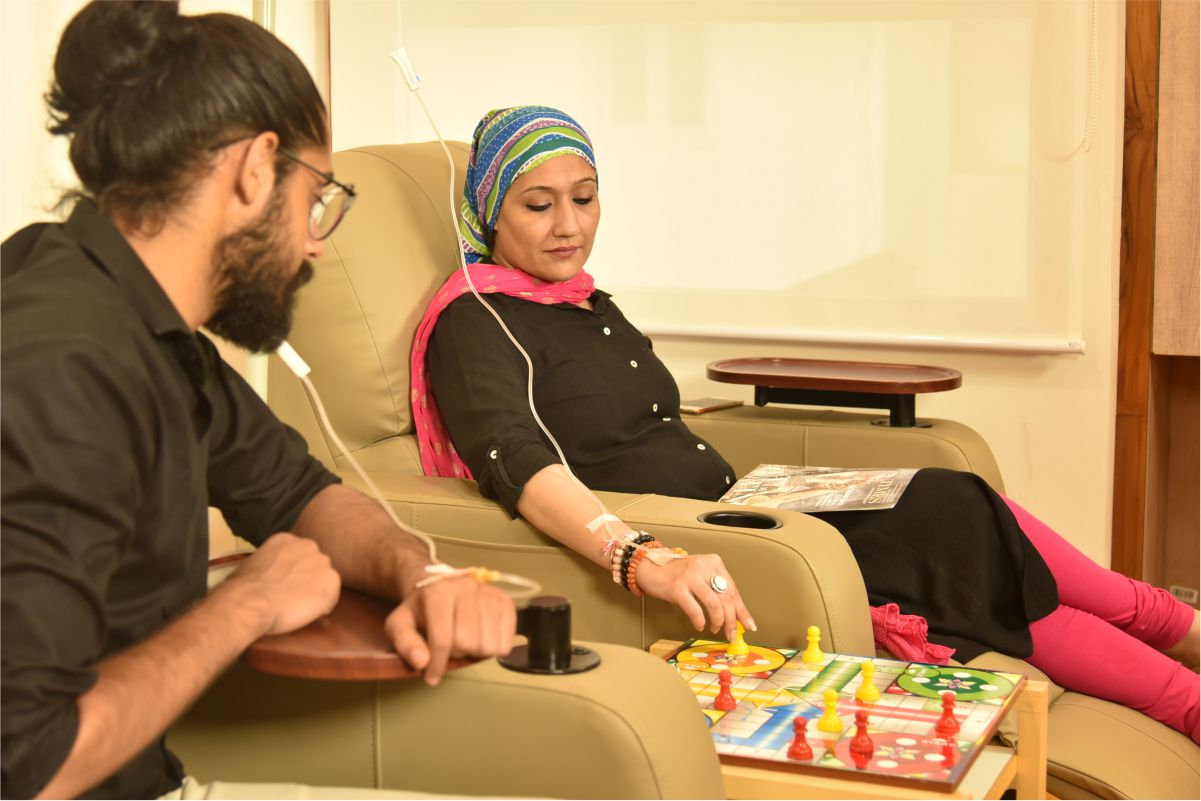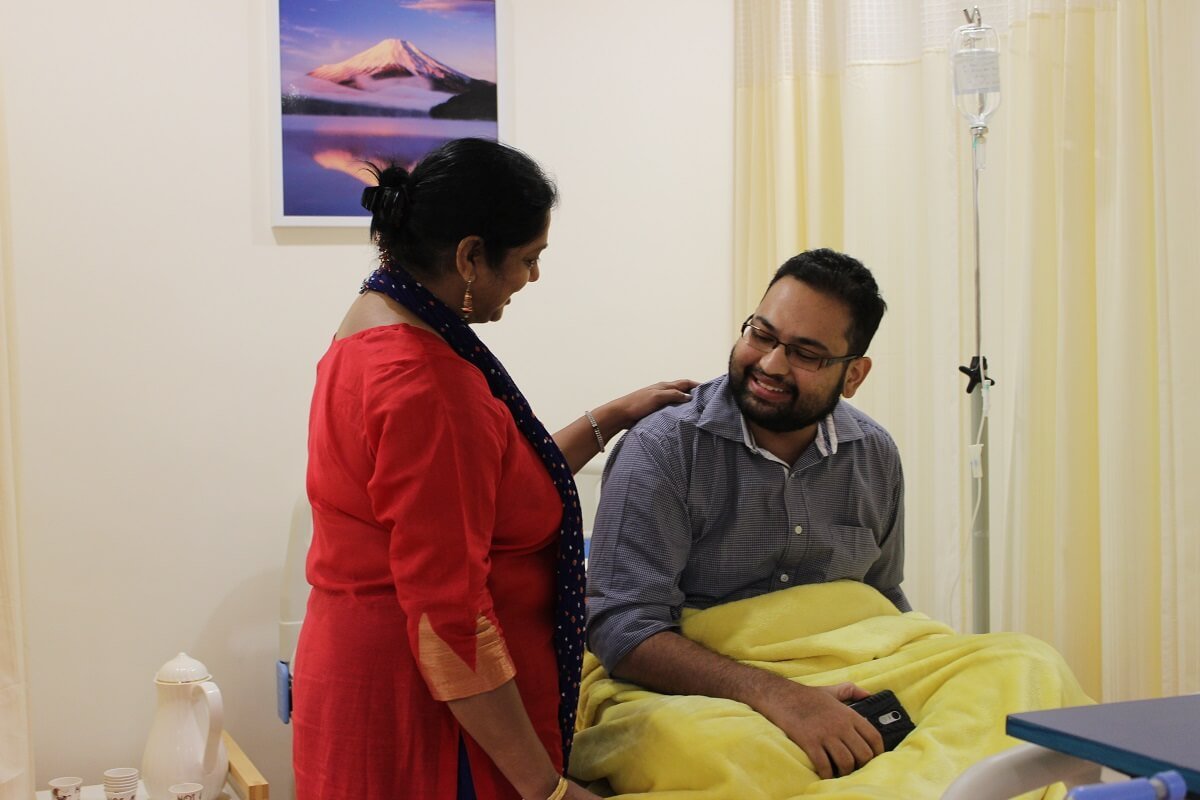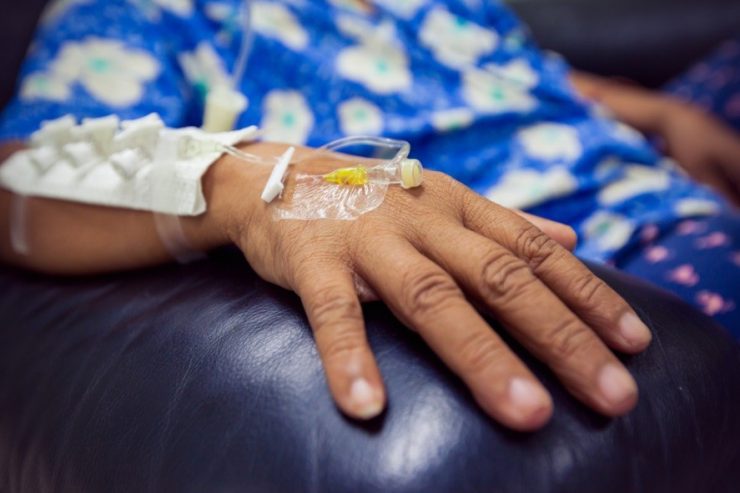Physiotherapy in Cancer Patients
Physiotherapy is treatment of various disease, injury or deformity by physical methods such as exercise, massage, electrotherapy and different modalities rather than by drugs or surgery. Physical activity has been shown to reduce and prevent many cancer related problems like fatigue, weakness, and improves sleep, appetite and mood.
Physiotherapy has important role in pre and post-op rehabilitation.
Physiotherapy treatment and physical activity has been proven to reduce the incidence of post cancer musculoskeletal disorders.
Exercise is an important part of cancer treatment plan. A growing amount of research shows that regular exercise can greatly improve physical and mental health during every phase of cancer treatment. An exercise program that meets your unique needs can help you get moving safely and successfully.
Exercise as part of cancer treatment:
Most of the research on physical activity and cancer has been focused on prevention or reduction of risk. Evidence on the effectiveness of exercise programs for cancer patients is a new and active area of researched. Even with incomplete evidence, healthcare providers may reasonably conclude that exercise and physical activity has a beneficial role in cancer treatment.
Exercise and physical activity should be seen as a complementary and self-empowering intervention that needs to be incorporated into the treatment and support of cancer patients.
Three phases may be considered when contemplating exercise or nutrition prescription in cancer patients and survivors. Phase one is diagnosis, treatment and recovery; phase two is life after recovery and, unfortunately some patients enter phase three, living with advanced cancer.
Treatment and recovery
During treatment, body-weight control and energy-balance stability are important. A number of studies, mainly with breast cancer or bone marrow transplant patients, have shown that exercise enhances the physical wellbeing, functional capacity and quality of life for cancer patients.
There is no biological evidence to date to support any concerns. The evidence shows that there is neither additional risk of harm to the patient nor any adverse interactions with treatment when exercise is individually prescribed and supervised.
People actively engaged in physical activity or exercise prior to diagnosis should be encouraged to continue as much as possible, within the limitations of the treatment plan. Previously sedentary patients should be encouraged to commence slowly and progress steadily under a supervised exercise program.
With older patients care should be taken to avoid interaction or increasing risk of compounding chronic illnesses such as arthritis, cardiovascular disease, osteoporosis or falls.
The vast majority of research has reported very positive outcomes for these illnesses even in the very old as a result of exercise.
Fatigue is usually the biggest barrier to patient participation in an exercise program. Excessive fatigue may be cancer related or treatment related and is a commonly reported symptom of treatment.
Post-recovery
Once clinical treatment is complete many patients are regarded as either stable or disease-free. After cessation of treatment however, patients are at increased risk of recurrence, second cancers and the side-effects of treatment. Cancer survivors are also at additional risk of other chronic conditions such as cardiovascular disease and type 2 diabetes. Most cancer patients experience significant life changes during and after treatment. These changes impact on future healthcare needs and their personal lives. Despite this, cancer survivors display similar health behaviours to the general population.
The focus of exercise after cancer treatment is lifestyle and long-term behaviour change. Benefits such as improved cardio-respiratory fitness, strength and functional capacity, quality of life, enhanced mood states and self-esteem are as important for cancer survivors as for patients.
Accordingly, weight management, improving and maintaining body composition, and retaining functional capacity are the goals of a physical activity program in this group.
The reduction of risk for cardiovascular diseases, diabetes, and secondary cancer are important benefits of participation in exercise and physical activity for cancer survivors. Survivors in this stage may benefit from the professional help of an exercise professional, Dietician and/or a General Practitioner to oversee the transition to a healthier lifestyle.
Evidence is emerging that physical and emotional wellbeing, as an outcome of exercise prescription, may improve overall survival. Quality of life and improvements in wellbeing may be the best markers of the benefits of an exercise program in cancer survivorship.
Advanced cancer and palliation:
People living with advanced cancer frequently experience problems with inadequate nutrition, loss of functional capacity and difficulty maintaining lean body mass (cachexia). Even for patients with advanced cancers, a mild physical activity or exercise program can assist in improving appetite, reducing nausea and combating constipation and dehydration. An effective stretching or range-of-motion program can help to maintain body function and resistance exercises minimise muscle wasting, or loss of lean body mass, and have a positive impact on function. Exercise also benefits psychosocial health by improving quality of life and self-efficacy.
Palliative patients can also benefit from an exercise program with the greatest benefits being the slowing of functional losses and retention quality of life.
Exercise and chemotherapy side-effects:
There do not appear to be any specific negative interactions between exercise and treatment outcomes in cancer patients. Treatment-related side-effects, such as fatigue, anaemia and lymphedema will influence a patient’s participation in an exercise program, but should not exclude them.
It is recommended that exercise professionals proceed with caution and maintain a close association with each patient’s Oncologist and/or GP to manage potential interactions.
Lymphedema
Stretching programs and range-of-motion (ROM) exercises are recommended in the presence of any lymphedema. Recent studies, though small in size, show that aerobic exercise and resistance training do not increase lymphedema and that early inclusion of exercise in recovery may lower the risk and/or severity of lymphedema experienced.
Anaemia
Anaemia is another common side-effect of cancer treatment. Monitoring of haemoglobin and/or ferritin levels is usually done by the treating Oncologist or GP. If anaemia is severe, it is recommended that exercise is delayed.
For less severe anaemia, it may be wise to delay or reduce volume and intensity of exercise prescribed until anaemia is corrected. Aerobic activity has been shown to be a potent stimulus for red blood cell production, which may improve anaemia. It is important to ensure the patient is eating a nutritious diet to supply all the necessary nutrients.
Compromised immunity
Some cancers and treatments have a negative impact on the immune system. Lymphoma, chemotherapy and bone marrow transplant all directly impact on the lymphatic and immune systems. When the immune system is compromised there is an increased risk of infection. Good hygiene is important. It may be necessary to allow up to twelve months following bone marrow transplant before exposure to public training venues. If the patient is having neutropenia avoid public gymnasiums and training venues. When leukocyte (white blood cell) count is low it is important to reduce the risk of cross-infection by limiting physical interpersonal contact and cleaning any equipment prior to use.
Lowering the intensity and volume of the exercise program is a good way to allow the patient to maintain some physical activity without overloading the immune system. Ongoing training can improve immunity and lymphatic circulation.
Radiation therapy
Patients who are currently undergoing radiation therapy should avoid water-based exercise programs. Radiation sites can be extremely sensitive or burned. Select specific activities that limit abrasion or rubbing of clothing around affected sites. Consider and test for skin sensitivity if any form of massage is incorporated into the exercise program.
Fatigue
Fatigue is one of the most frequently reported side-effect of all cancer treatments. Fatigue can be managed and accommodated in an exercise regime by careful monitoring of the patient’s condition. Individual adjustment of the exercise intensity and volume encourages the patient to continue to participate. Stretching, range-of-motion (ROM), and yoga activities allserve to enhance functional capacity and maintain strength whilst avoiding excessive fatigue during the exercise program.
To effectively combat fatigue, an exercise program should include aerobic, flexibility and resistance training components. Patients may tolerate resistance training better and, if fatigue is severe, resistance training may be more effective because of the shorter time.
Visualisation and relaxation techniques should be incorporated into a comprehensive program. These complementary therapies allow the patient to develop a sense of body awareness and will help with the psychosocial components of cancer-related fatigue.
Effectively combining exercise and treatment:
Interactions between cancer treatment and exercise programs are unlikely; however individuals react differently to standard treatment regimes.
It is preferable to be cautious and limit exercise frequency and intensity whilst in a specific treatment cycle. A great benefit of communication with the Oncologist is in determining start and end points of various treatment cycles. These allow for careful planning to prepare patients for treatment and identify windows of opportunity for exercise.
In this sample chemotherapy cycle- the patient is to undergo a three-cycle treatment regimen, consisting of one week of daily intravenous (IV) injections and two weeks of recovery, repeated three times. In the treatment week the patient may experience severe side-effects and will spend long periods in the hospital and therefore have limited time for exercise. This can be scheduled as exercise recovery. As the patient recovers from the worst side-effects of the treatment it may be possible to increase the intensity and/ or frequency of exercise. This example serves only to illustrate the need for the exercise professional to have communication with other care providers in order to adjust the exercise prescription in an individualised managed care plan.
Benefits of physical activities during cancer treatment:
- Reduce treatment related fatigue
- May reduce anxiety and depression
- Speeds up recovery post-op.
- Improves overall health status
- Regain strength, movement and function
- Improves Physical functioning and mobility
- Improves Quality of life
- Maintain/improve muscle strength
- Posture correction
- Reducing Pain
- Improves Balance and coordination and decreases risk of falls
- Management of oedema
- Makes patient physically independent
- Improves respiratory and cardio vascular fitness
- Improves sleep
- Reduce the risk of developing other co-existing conditions, like diabetes, heart disease.
Physiotherapy is indicated for following conditions:
Breast cancer
Musculoskeletal pain
Peripheral neuropathy and other neurological disorders
Joint related problems
Lymphedema
Decreased physical activity
Decreased mobility
Generalized muscular weakness
Muscular atrophy
Decreased cardio pulmonary endurance
Decreased lung capacity
Dysphagia
Post-op rehabilitation
Geriatric rehabilitation
Age related degeneration of joints
Urinary incontinence






